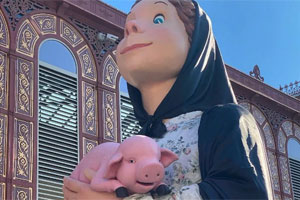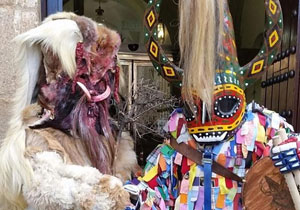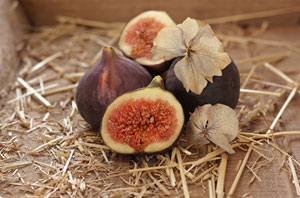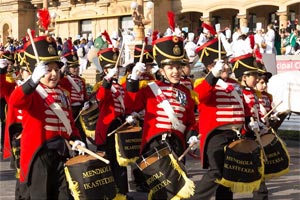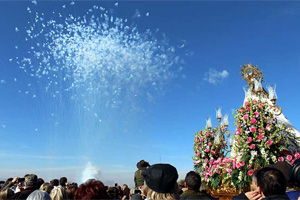Holy Week of Zamor
What will surprise you about the Holy Week of Zamora
The processions of the Holy Week of Zamora are characterized by their sobriety and silence. Unlike other similar celebrations, no drums or trumpets are used in Zamora, creating a very different and solemn atmosphere.
Declared a Festival of International Tourist Interest since 1986.
The floats carried in the processions are true works of art. Some of them are over 500 years old and have been made by renowned sculptors and artisans. In addition, the sculptures are often large and heavy, requiring great skill and effort from the carriers.
The Holy Week of Zamora is deeply rooted in local tradition and has a large number of brotherhoods, some of which have more than 500 years of history. Each one has its own identity and personality, making the processions very varied and colorful.
During the Holy Week of Zamora, other events are also celebrated, such as concerts of sacred music or exhibitions of religious art. These activities complement the celebration and allow you to learn more about the history and culture of the city.
Gastronomy is also an important part of the Holy Week of Zamora, which you can learn more about at the end of this article.
Processions of Zamora's Holy Week
The processions of Zamora's Holy Week are one of the most prominent events of this religious celebration. Here are some of the most popular processions:
The Procession of Silence
It is the most important procession of Zamora's Holy Week and takes place on the night of Maundy Thursday. The procession is characterized by absolute silence from the participants and the spectators, creating a very special and sober atmosphere. The seven brotherhoods of the city, each carrying their respective floats, participate in this procession.
The Procession of the Dawn
It takes place on the night of Good Friday and is one of the most emotional processions of Zamora's Holy Week. The procession begins at 2 a.m. and travels through the streets of the city in an atmosphere of great devotion and reflection. Several brotherhoods participate in this procession, including the Brotherhood of the Holy Christ of the Expiration, which carries its famous float of the Dead Christ.
The Procession of Solitude
It is the procession that closes Zamora's Holy Week and takes place on Resurrection Sunday. Several women's brotherhoods participate in this procession, carrying images of the Virgin Mary in her grief and solitude after the death of Jesus Christ. This procession has a very emotional and reflective atmosphere and takes place during a moment of great joy for the Resurrection of Jesus.
These are some of the most prominent processions of Zamora's Holy Week, but there are many more that take place throughout the week. Each procession has its own personality and characteristics, making Zamora's Holy Week a very rich and varied celebration of traditions and customs.
The most emotional moments
- Sermon of the Seven Words: On Good Friday, the Sermon of the Seven Words is celebrated, in which different priests of the city give a reflection on each of the last words Jesus spoke before dying on the cross.
- Lighting of the Lights of the Sanctuary of the Virgin of the Concha: On Resurrection Sunday, the lighting of the Lights of the Sanctuary of the Virgin of the Concha is celebrated, a very emotional moment in which the image of the Virgin is illuminated and the hymn to the Patroness of Zamora is sung.
- The Encounter between the Virgin of Solitude and the Resurrected during the procession of Resurrection Sunday, symbolizing the reunion between mother and son after the Resurrection.
Origin and brief history of the Holy Week in Zamora
The origins of the Holy Week in Zamora date back to the 13th century, when the city already had various brotherhoods and guilds that organized processions and religious celebrations. These brotherhoods and guilds were inspired by the traditions and customs of Holy Week in other Spanish cities, such as Seville or Valladolid.
Over time, the Holy Week in Zamora acquired its own personality, thanks to the devotion and efforts of its brotherhoods and guilds. Throughout the centuries, these brotherhoods gained greater relevance and power, becoming a fundamental part of the social and religious life of the city.
Today, the Holy Week in Zamora is one of the most important religious celebrations in Spain and is declared as an International Tourist Interest Festival. Every year, thousands of people visit the city to witness the processions and participate in the religious celebrations, which have become a fundamental part of the identity and culture of Zamora.
What places can we visit in the city of Zamora?
Zamora is a city rich in historical and cultural heritage, with numerous monuments and places of interest that are worth visiting. Some of the most notable places are:
- Zamora Cathedral: An impressive Romanesque cathedral built in the 12th century. Its dome and magnificent choir are particularly noteworthy.
- Zamora Castle: A medieval fortress built in the 10th century and reformed in the 15th century. Currently, the Zamora Museum is located inside and can be visited.
- Plaza Mayor: The city's nerve center and one of the busiest places. Here, visitors can find bars, restaurants, and shops.
- Palacio de los Momos: A Baroque building constructed in the 18th century that currently houses the Zamora City Hall.
- San Juan de Puerta Nueva Church: One of the oldest churches in the city, built in the 12th century and housing numerous works of art.
- Ethnographic Museum of Castile and Leon: Located in the former San Francisco convent, it houses a vast collection of objects and tools related to the traditions and customs of the region.
- Troncoso Viewpoint: Located in the San Frontis neighborhood, it offers one of the most spectacular views of the city.
These places are just an example of what visitors can enjoy in Zamora. The city has numerous monuments and historic buildings that make it a unique and charming place.
The popular cuisine of Zamora
The cuisine of Zamora is rich and varied, with typical dishes and products from the region that are highly appreciated by visitors. Some of the most popular dishes and products are:
- Zamora cheese: A cheese made with sheep's milk and with a designation of origin. It is a cured cheese, with an intense flavor and characteristic aroma.
- Roasted lamb: A typical dish of the region, made with Castilian lamb roasted in the oven. It is a hearty and very tasty dish.
- Aliste beef: Beef from the Aliste region, which is characterized by its intense flavor and soft texture.
- Duero River trout: A fresh and tasty fish caught in the Duero River and cooked in various ways.
Salted cod with garlic: A dish made with desalted cod, potatoes, peppers, tomatoes, and garlic. It is a hearty and very tasty dish. - Products from the garden: Zamora has a rich vegetable garden with products such as onions, peppers, or tomatoes, which are used in the preparation of various dishes.
- Traditional sweets: Zamora's pastry is varied and rich in traditional sweets such as mantecadas, sponge cakes, doughnuts, or buns.

